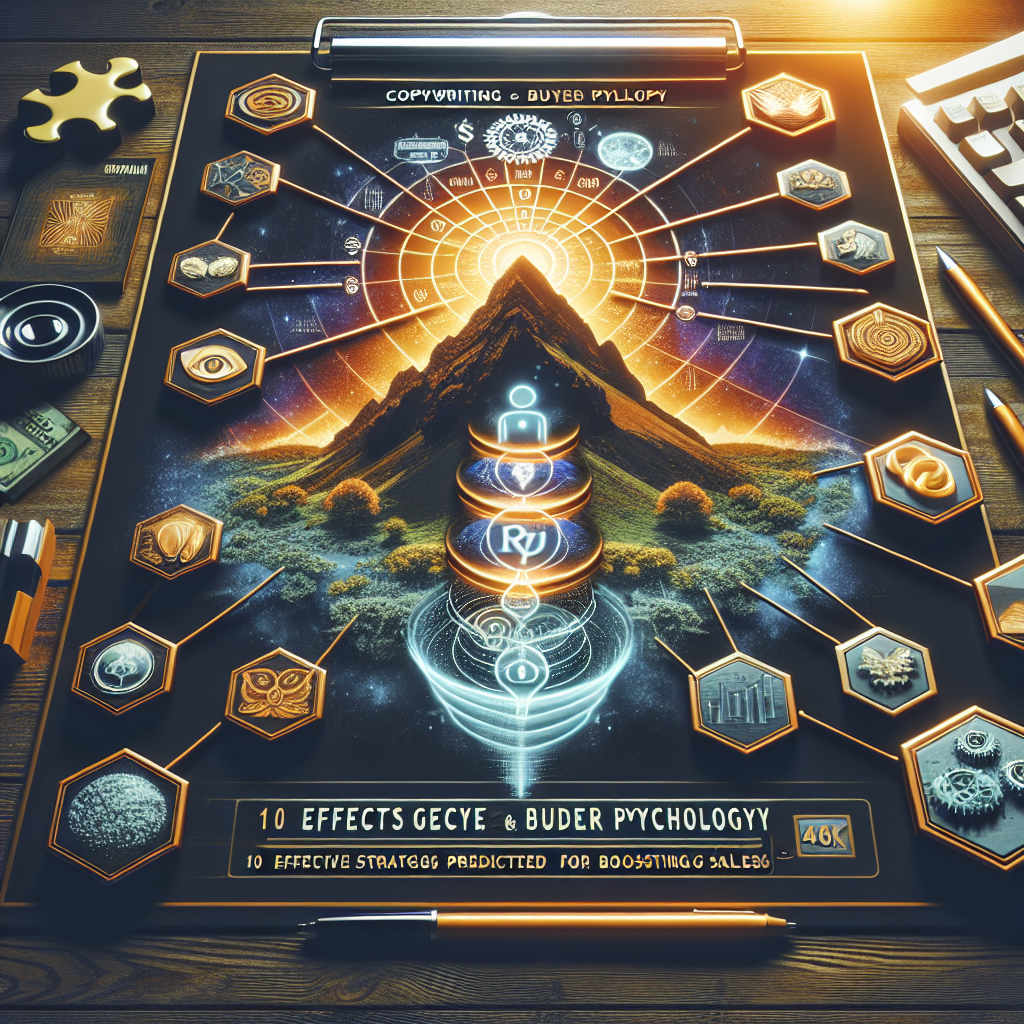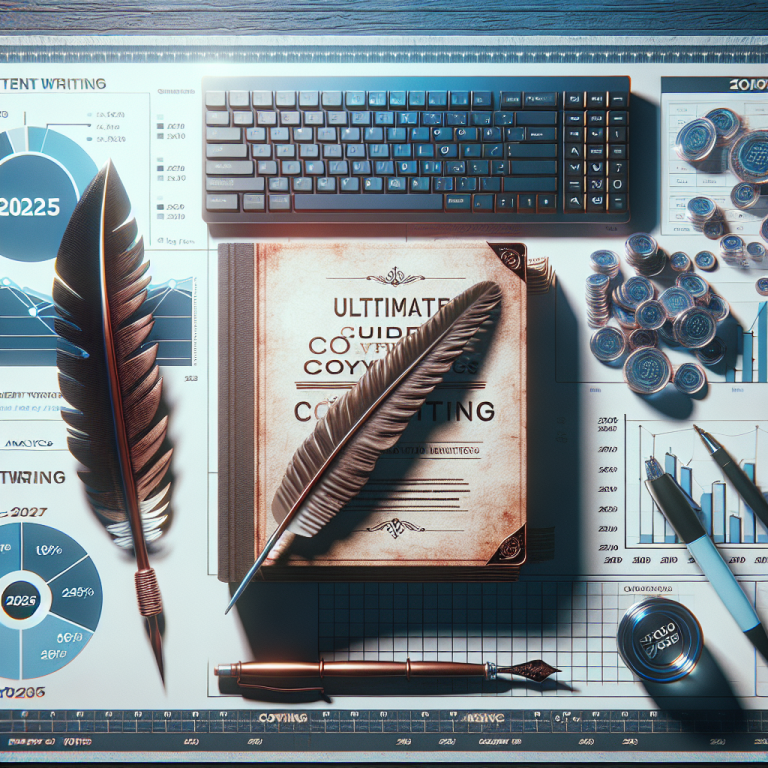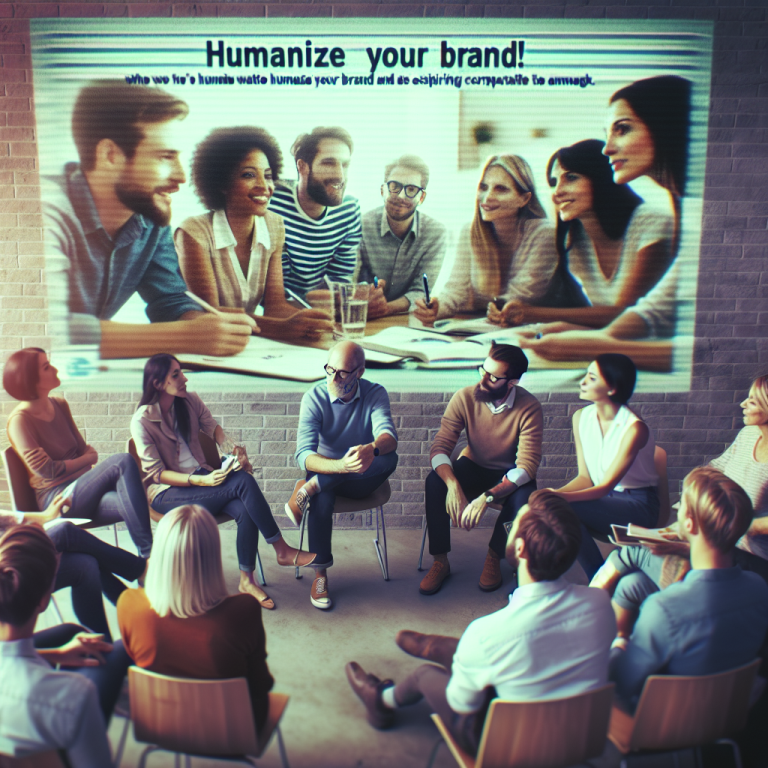10 Effective Copywriting and Buyer Psychology Strategies to Boost Sales in 2025
- 1. Leverage Emotional Triggers in Copywriting
- 2. Build Trust with Social Proof
- 3. Use Scarcity and Urgency Tactics
- 4. Craft Clear and Compelling Calls to Action
- 5. Personalize Customer Experiences
- 6. Apply Neuromarketing Principles
- 7. Focus on Benefits, Not Features
- 8. Utilize Data-Driven Insights
- 9. Incorporate Storytelling Techniques
- 10. Continuously Test and Optimize
In today’s competitive marketplace, mastering the art of copywriting and buyer psychology is more crucial than ever. As we move into 2025, understanding how consumers think and what drives their purchasing decisions can give you a significant edge. In this article, Iâll share 10 effective strategies rooted in psychological insights and proven copywriting techniques to help you boost your sales and connect more authentically with your audience.
1. Leverage Emotional Triggers in Copywriting
Understanding Emotional Drivers
People often make purchasing decisions based on emotions rather than logic. Effective copywriting taps into these emotional triggersâsuch as fear, desire, or belongingâto inspire action. For example, an ad that emphasizes how a product will make someone feel confident or secure can resonate deeply.
In 2025, data shows that emotional appeals account for over 70% of buying decisions across industries. Recognizing this, savvy marketers craft messages that evoke specific emotions aligned with their audienceâs desires or fears.
Practical tip: Use vivid language and storytelling to create an emotional atmosphere. Show your audience the transformation they will experience, making the decision to buy more compelling.
Practical Application: Storytelling
Stories humanize your brand and foster emotional connections. Sharing customer success stories or your brandâs mission can activate empathy, strengthening trust and motivation to buy.
An example: Instead of saying “Our skincare reduces wrinkles,” tell a story about a customer who regained confidence after using your product, creating an emotional hook.
Remember, integrating emotional triggers into your copy isnât about manipulationâitâs about authentic communication that resonates with the buyerâs core motivations.
2. Build Trust with Social Proof
The Power of Testimonials and Reviews
Consumers are influenced heavily by the experiences of others. Incorporating testimonials, reviews, or case studies into your marketing builds credibility and trust. According to recent studies, 92% of consumers read online reviews before purchasing.
In 2025, platforms like TikTok and Instagram have amplified user-generated content, making social proof more accessible and influential than ever. Use authentic customer reviews and demonstrate real results to persuade hesitant buyers.
Tip: Showcase diverse customer stories and highlight specific benefits they received. Authenticity is keyâavoid overly polished or fake testimonials.
Leveraging Authority and Expertise
Endorsements from industry experts or influencers can elevate your brandâs authority. When experts endorse your product, potential buyers are more likely to trust your claims.
Combine social proof with certifications or awards for an extra layer of trust. As perceptions evolve in 2025, buyers value transparency and credible endorsements even more.
Action tip: Regularly update your testimonials and seek genuine reviews that reflect current offerings and customer experiences.
3. Use Scarcity and Urgency Tactics
Creating a Sense of Urgency
Urgency motivates buyers to act quickly, reducing hesitation. Phrases like “Limited time offer” or “Only a few items left” trigger the fear of missing out (FOMO), one of the strongest psychological motivators in copywriting and buyer psychology.
In 2025, technological advancements enable personalized scarcity tactics, such as countdown timers or stock updates tailored to individual users. These tools make urgency feel more real and compelling.
Practical tip: Use time-sensitive language strategically in your emails, landing pages, and ads to drive conversions without seeming pushy.
Implementing Limited Offers
Offering exclusive deals or bonuses for a limited period encourages immediate action. Businesses implementing flash sales or exclusive bundles see significant sales spikes in a short timeframe.
Research indicates that scarcity tactics can increase conversions by up to 30%, especially when combined with social proof and emotional appeals. Always ensure your claims are honest to maintain trust.
Actionable insight: Regularly refresh your scarcity offers to keep your audience engaged and eager to act quickly.
4. Craft Clear and Compelling Calls to Action
The Anatomy of a Strong CTA
Your call to action (CTA) is the final step in guiding your prospects toward a sale. An effective CTA should be concise, action-oriented, and create a sense of value or urgency. Words like “Discover,” “Join,” or “Get Started” motivate users to take the next step.
In 2025, personalization software allows marketers to tailor CTAs based on user behavior, preferences, or stage in the buyer journey, increasing their effectiveness significantly.
Tip: Use contrasting colors and strategic placement to make your CTA stand out on the page or in your email.
Testing and Optimizing CTAs
Split testing different CTA phrases, designs, and placements helps identify the most effective versions. Regularly analyzing performance metrics ensures your key actions drive results.
In the context of copywriting and buyer psychology, understanding what wording resonates most helps you craft CTAs that truly convert.
Actionable tip: Use A/B testing tools and closely monitor engagement to refine your strategies continually.
5. Personalize Customer Experiences
Segmentation and Targeted Messaging
Segmenting your audience allows for tailored messages that speak directly to specific groupsâ needs and desires. Personalization has been shown to deliver six times higher transaction rates (source: Epsilon) in 2025.
Use data analytics to understand your audienceâs preferences, behaviors, and pain points. Then, craft relevant, personalized content that addresses these specifics.
Practical tip: Implement dynamic content on your website and email campaigns to adapt messaging based on user actions and demographics.
Creating a Personalized Buyer Journey
Mapping out the ideal buyer journey helps ensure each touchpoint is personalized and relevant. This could include targeted product recommendations, personalized emails, or exclusive offers.
Personalization not only boosts conversions but also fosters long-term loyalty, as customers feel valued and understood.
Remember, in 2025, AI tools make hyper-personalization more accessible than everâembrace these innovations to stay ahead.
6. Apply Neuromarketing Principles
Understanding Brain-Based Triggers
Neuromarketing studies reveal how the brain processes marketing stimuli, highlighting areas like the amygdala that activate emotional responses. Incorporating these insights into your copy can influence decision-making subconsciously.
For example, using certain color schemes, imagery, or phrasing can affect brain activity and enhance memorability or desire.
In 2025, neuroscience tools further refine our understanding, enabling marketers to craft content that appeals to subconscious drivers effectively.
Practical Neuromarketing Techniques
Techniques like anchoring (comparing prices) or framing (highlighting benefits vs. costs) guide consumers toward favorable decisions. Incorporate visual cues or emotional language that activate reward centers in the brain.
Implement these scientifically-backed tactics ethically to build trust while profoundly influencing consumer behavior.
Tip: Use eye-tracking data and heatmaps to see what elements capture your audienceâs attention on your pages.
7. Focus on Benefits, Not Features
Highlighting Real Value
Consumers arenât just buying featuresâtheyâre buying solutions to their problems. Shift your focus to the benefits your product or service offersâhow it improves life or saves time.
For example, instead of âOur blender has 10 speeds,â say âBlend your favorite smoothies quickly and effortlessly, saving you time every morning.â
This approach aligns with buyer psychology by appealing directly to needs and desires, making your copy more persuasive in 2025âs crowded marketplace.
Practical Tips for Benefit-Driven Copy
- Identify your target audienceâs key pain points.
- Frame your benefits as solutions rather than features.
- Use testimonials to show benefits in action.
By emphasizing benefits, youâre employing one of the most effective techniques in copywriting and buyer psychology to increase conversions.
8. Utilize Data-Driven Insights
Harnessing Analytics for Better Copy
Data insights help you understand what resonates with your audience. Tracking metrics like click-through rates, bounce rates, and conversion rates informs your copy adjustments.
In 2025, advanced analytics and AI-powered tools allow real-time testing and personalization, making your marketing more responsive.
Tip: Use heatmaps and customer feedback to identify which parts of your copy or website need optimization.
Adjusting Strategies Based on Data
Data doesnât just show past performance; it guides future decisions. Continuously experiment with headlines, offers, and messaging to discover what optimizes your sales.
Remember, in copywriting and buyer psychology, data-backed strategies are the most reliable way to stay relevant and effective.
Action item: Regularly review your analytics and adapt your copy accordingly for maximum impact.
9. Incorporate Storytelling Techniques
The Power of Narrative
People love storiesâthey engage the mind and emotions. Using storytelling in your copy helps illustrate your message and makes your brand memorable.
2025 trends show brands that tell authentic stories enjoy higher engagement and loyalty. Share your journey, customer success stories, or a narrative around your productâs origin.
Tip: Structure stories with relatable characters, conflict, and resolution to keep your audience invested.
Storytelling and Buyer Psychology
Stories activate parts of the brain responsible for empathy and personal connection, influencing buyersâ subconscious. They also help simplify complex messages and foster trust.
Examples include video testimonials or case studies that spotlight a customerâs journey from problem to solution using your product.
Remember, effective storytelling aligns with neuroscience insights to create stronger emotional bonds.
10. Continuously Test and Optimize
Iterative Improvement
Markets evolve, and so should your copy. Regular testingâA/B testing headlines, offers, or design elementsâhelps discover what works best.
By analyzing results, you can fine-tune your messaging and tactics, keeping your approach aligned with current buyer psychology in 2025.
Tip: Use tools like Google Optimize, Hotjar, or other analytics platforms to implement and analyze continuous testing.
Staying Ahead of Trends
Follow industry trends and consumer behavior studies to anticipate shifts in copywriting and buyer psychology. Staying informed enables proactive adaptations, giving you an edge over competitors.
In the fast-paced digital landscape of 2025, a mindset of ongoing optimization ensures sustained growth and relevance.
Takeaway: Make testing a regular part of your marketing routine, and use data to guide your decisions consistently.
Frequently Asked Questions
1. What is the importance of copywriting and buyer psychology in marketing?
Understanding copywriting and buyer psychology allows you to craft messages that resonate emotionally and cognitively with your audience, increasing the likelihood of conversion and loyalty.
2. How can I incorporate buyer psychology into my copy?
Use emotional triggers, social proof, scarcity, personalization, and storytelling to connect with your audienceâs subconscious motivations and needs.
3. Why is personalization important in 2025?
Personalization creates relevant experiences that foster trust and engagement. In 2025, advanced AI tools make hyper-personalized marketing more accessible and effective than ever.
4. How often should I test my copy and marketing strategies?
Regular A/B testing and analysis are recommended to stay aligned with consumer preferences and market trends. Consistent testing ensures continuous improvement.
5. What role does data play in improving copywriting and buyer psychology?
Data provides insights into customer behavior, preferences, and campaign performance, allowing you to optimize your messaging effectively and sustainably.
Mastering strategies in copywriting and buyer psychology is essential for driving sales in 2025. By applying emotional triggers, leveraging social proof, creating urgency, and continuously optimizing, you can connect more deeply with your audience. Remember, understanding how your buyers think and behave enables you to craft compelling, effective marketing that stands out in todayâs competitive environment. Stay curious, keep testing, and let psychology guide your copy to new heights in 2025!








